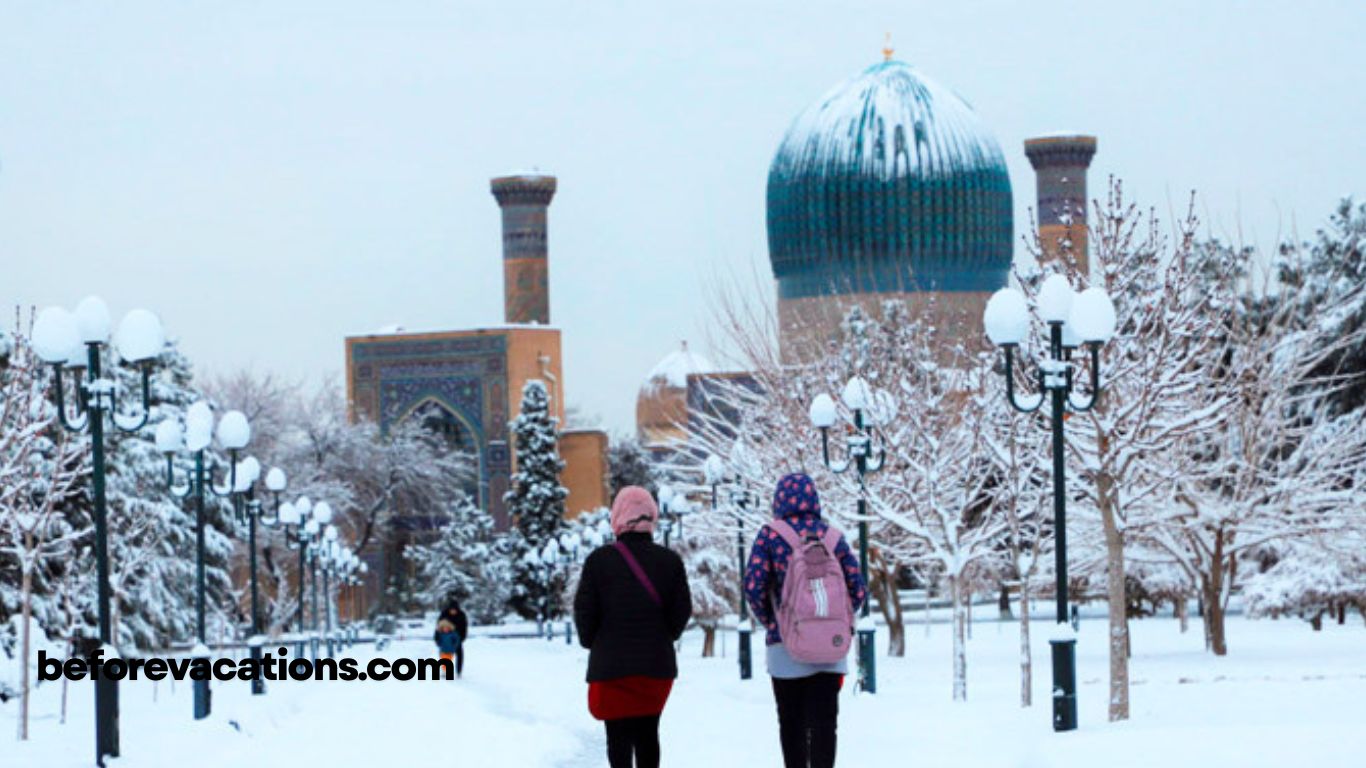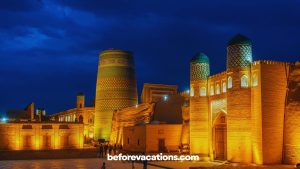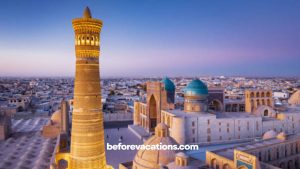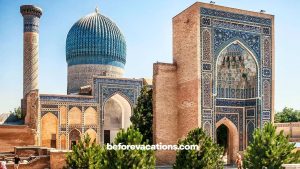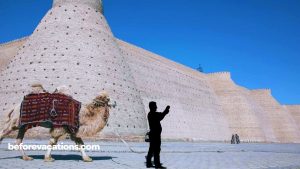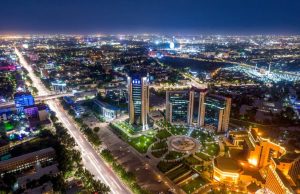When to Go: Finding the Best Time to Visit Uzbekistan for Perfect Weather and Festivals
Unlocking the Silk Road’s Seasons: A Guide to the Best Time for Your Uzbekistan Trip
Uzbekistan’s location at the heart of Central Asia gives it an extreme continental climate. This means you will find brutally hot summers and often freezing winters. Consequently, choosing the right time to travel is the single most critical factor in guaranteeing a comfortable and memorable journey along the Silk Road. The difference between an enjoyable day of sightseeing at Registan Square and a grueling struggle against the elements comes down entirely to timing. This comprehensive guide details the weather, key festivals, crowd levels, and specific regional advice to help you pinpoint the absolute best time to visit Uzbekistan. We will break down the peak seasons, explain the advantages of the shoulder months, and reveal why winter travel might just be the quiet, budget-friendly secret you’ve been looking for.
The Peak Seasons: Spring and Autumn
The overwhelming consensus from seasoned travelers and local experts is that the best time to visit Uzbekistan is during the mild, pleasant weather of the shoulder seasons. These two periods—Spring and Autumn—offer the ideal conditions for sightseeing, minimizing the extremes of the desert climate.
Spring (March to Mid-June): Blossoming Landscapes and Festival Joy
Spring is arguably the most beautiful time to travel across the plains and ancient cities of Uzbekistan. Beginning in mid-March, temperatures start to climb steadily, transforming the stark, dry landscapes. Average daytime temperatures range from a comfortable $15^\circ \text{C}$ ($59^\circ \text{F}$) in March to the mid-$20^\circ \text{C}$s ($70^\circ \text{F}$s) by May. This mild weather is perfect for spending long hours outdoors, exploring the vast courtyards of Samarkand and the narrow streets of Khiva without feeling overwhelmed by heat.
The cultural highlight of this season is the celebration of Navruz (New Year) on March 21st. This ancient festival marks the spring equinox and involves five days of public holidays, family gatherings, and traditional music and dance performances in cities like Bukhara and Tashkent. Furthermore, late May often sees the vibrant Silk and Spices Festival in Bukhara, a grand spectacle of traditional crafts, music, and cuisine. Visitors should know that spring is the peak tourist season, meaning popular sites will see larger crowds and you must book high-speed Afrosiyob train tickets and central accommodation months in advance to secure the best rates and availability.
Autumn (September to Early November): Harvest Feasts and Golden Light
The autumn months offer equally excellent weather, making this period highly popular among those who prefer slightly less rain than spring. September brings temperatures cooling back down into the mid-$20^\circ \text{C}$s, offering comfortable conditions for daytime exploration. However, the mornings and evenings can be quite cool, particularly in Samarkand, so travelers should pack layers.
A key advantage of visiting in the fall is the harvest season. Local markets and bazaars, especially Tashkent’s Chorsu Bazaar and Samarkand’s Siab Bazaar, overflow with fresh, unbelievably sweet fruits like Uzbekistan’s famous melons, grapes, and pomegranates. Experiencing the markets during this abundance is a wonderful opportunity for immersion into local life and an absolute must for food lovers. September is particularly busy, but by October and early November, the weather remains pleasant while tourist crowds begin to thin, offering a great balance of comfort and tranquility for your journey.
The Off-Seasons: Summer and Winter
Traveling outside the peak seasons requires more strategic planning, but it offers significant benefits for specific types of travelers, including budget explorers and those focused on particular regional activities.
Summer (Mid-June to August): High Heat and Mountain Adventures
Summer is characterized by dry, intense heat, making it the low season for the ancient Silk Road cities. Temperatures frequently soar past $35^\circ \text{C}$ ($95^\circ \text{F}$) and can even reach $40^\circ \text{C}$ ($104^\circ \text{F}$), particularly in the desert cities of Khiva and Bukhara. Traveler Tip: If you must travel during summer, plan all major sightseeing activities for the very early morning (before 10:00 AM) and late afternoon (after 5:00 PM). Use the middle of the day for visiting air-conditioned museums, relaxing in traditional chaikhanas (teahouses) by the Lyab-i Hauz in Bukhara, or taking advantage of hotel pools.
However, summer is the best time to visit Uzbekistan’s mountain regions in the east. The high-altitude areas like the Chimgan Mountains and Ugam-Chatkal National Park near Tashkent offer cooler temperatures and are ideal for hiking, trekking, and horse riding. The long daylight hours also make this the perfect season for travelers planning extended hikes or multi-day excursions away from the city heat.
Winter (December to February): Minimal Crowds and Budget Travel
Uzbekistan’s winter brings clear skies, bright sunshine, and significantly cold temperatures, especially in the north and in the evenings. Average temperatures in January hover around freezing, and snow is common, especially in Samarkand and Tashkent. Despite the cold, visiting in winter presents a fantastic opportunity for a quiet, contemplative trip.
With tourist groups at their lowest, you will often find major sites like the Shah-i-Zinda Necropolis virtually empty, allowing for stunning, undisturbed photography. Furthermore, budget-conscious travelers can enjoy lower accommodation prices and better deals on transportation. While Khiva can feel quite empty and a little remote in winter, Bukhara and Tashkent remain lively. This season also appeals to adventure seekers interested in Uzbekistan’s small but growing number of ski resorts in the eastern mountains, such as those in the Beldersay area.
Regional and Event-Based Timing Guide
| Destination/Focus | Best Time to Visit | Why This Time is Ideal |
| Samarkand & Bukhara | April-May & September-October | Perfect sightseeing weather; avoiding the intense summer heat and winter cold. |
| Khiva | Late April & Early October | Comfortable for navigating the walled city; less exposed to extreme desert temperatures. |
| Tashkent | Year-round (with caveats) | Modern infrastructure makes it manageable; choose winter for best-value urban breaks. |
| Mountain Hiking (Chimgan) | June to August | Warmest temperatures for high-altitude treks; dry conditions are ideal for camping. |
| Bazaars & Local Produce | September to Mid-October | The height of the harvest season when fresh fruits and vegetables are at their best. |
| Navruz Festival | Mid to Late March | The most important cultural holiday; guarantees traditional music, dance, and food. |
Final Considerations: Booking and Current Updates
To ensure a smooth trip, book your high-speed Afrosiyob train tickets as soon as your dates are confirmed, especially if traveling in April, May, or September. Tickets sell out quickly during the peak seasons. Current safety and entry rules for Uzbekistan remain straightforward, with an increasingly liberal visa regime making entry easier for global travelers. However, it is always wise to check the official Uzbekistan Ministry of Foreign Affairs website (nofollow) close to your travel date for any recent updates regarding entry or health requirements. By aligning your travel window with the most favorable weather and the events you want to experience, you will guarantee that your Silk Road adventure is everything you hoped it would be.
Start Exploring: Ready to plan your perfectly timed trip? Use our guide to book your flights for the optimal month and experience the wonder of Uzbekistan!

